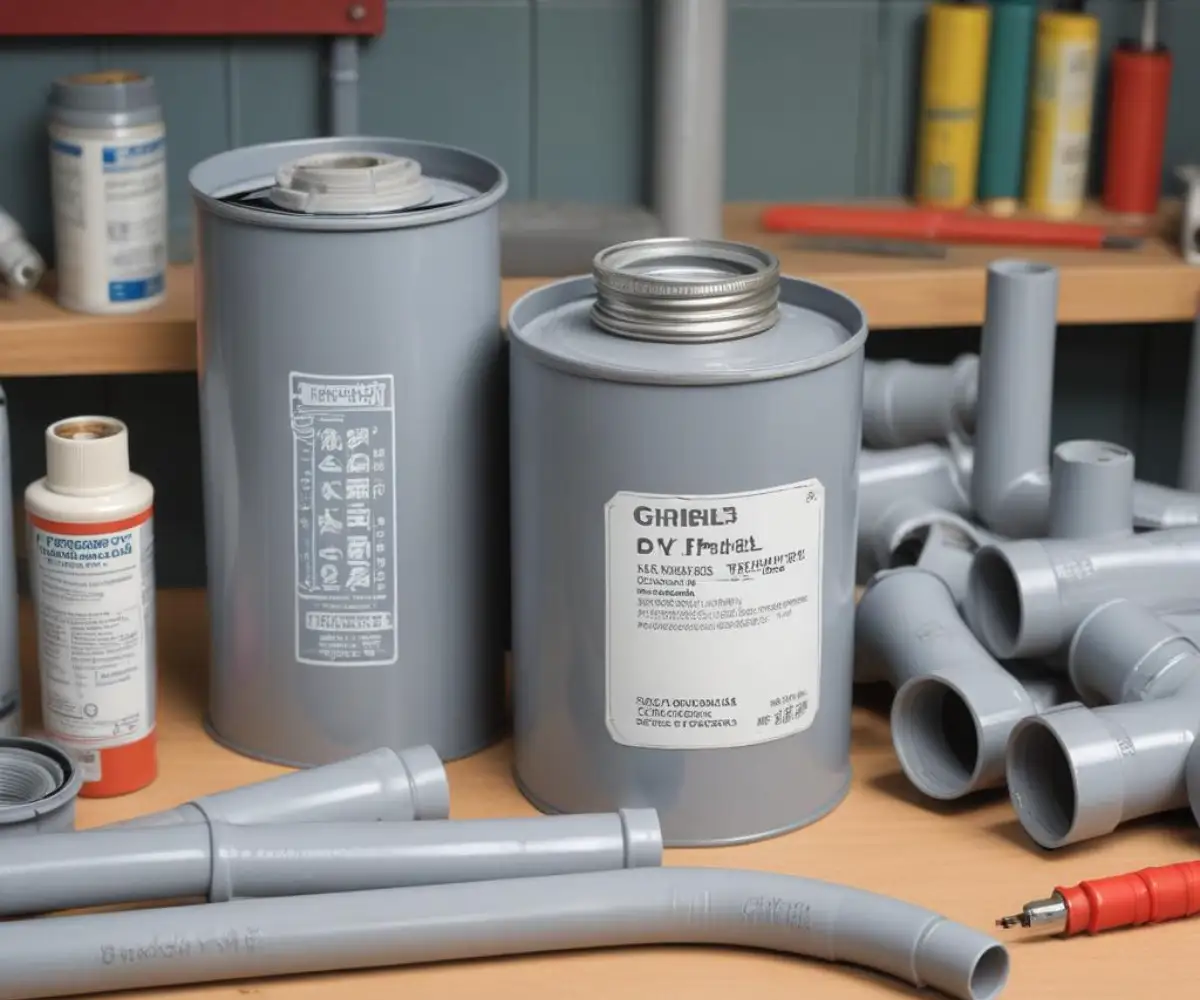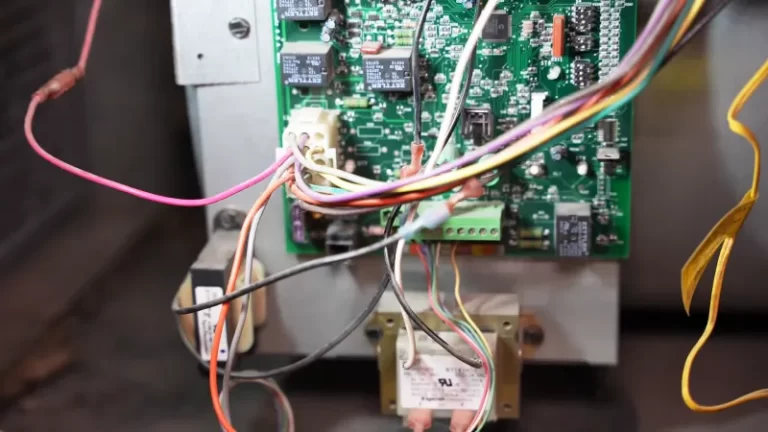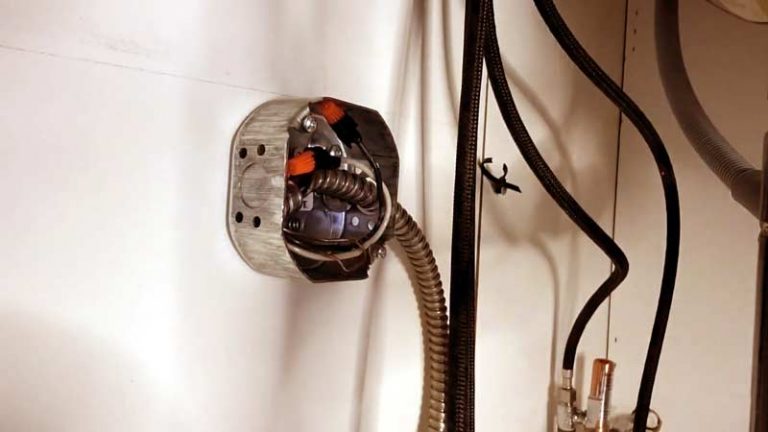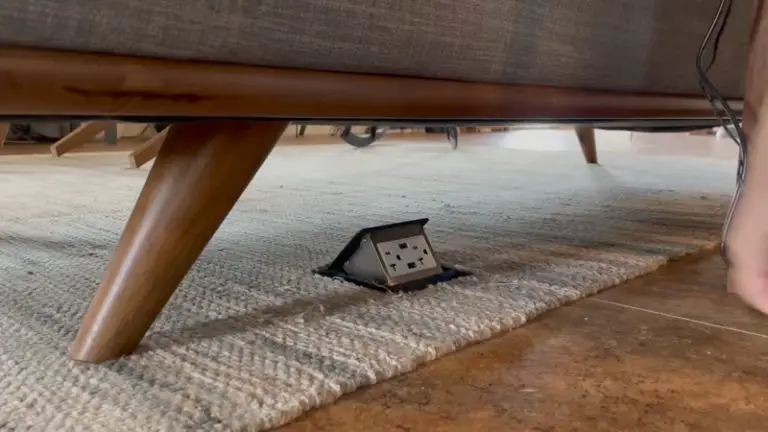Conduit Glue vs PVC Glue: The Critical Mistake You Can’t Afford to Make
You’re standing in the hardware store aisle, staring at two nearly identical cans. One is labeled “PVC Glue” for plumbing, and the other is “Conduit Glue” for electrical work. The plumbing glue is right there, maybe you even have some left over at home. The temptation is real: can’t you just use one for both jobs? This simple choice feels insignificant, but it’s one of the most critical decisions you can make for the safety and compliance of your project.
Making the wrong choice isn’t just a minor error; it’s a mistake that can lead to failed electrical inspections, dangerous wiring failures, and costly, frustrating rework. The truth is, despite their similar appearance, these two products are fundamentally different, engineered for entirely separate purposes. Using them interchangeably introduces risks that no contractor or DIYer should ever be willing to take.
You'll Learn About
What is Standard PVC Cement? A Deep Dive into Plumbing Glue
Standard PVC cement, the kind you find in the plumbing aisle, is a powerful chemical agent designed for one primary purpose: to create a permanent, watertight seal in pressurized plumbing systems. It’s not really a “glue” in the traditional sense of sticking two surfaces together. It’s a solvent cement, meaning it works by chemically melting and fusing the plastic parts into a single, seamless piece.
This process, known as solvent welding, is incredibly effective for pipes that need to hold back water pressure day in and day out. The formulation is thick, with excellent gap-filling properties, ensuring that even minor imperfections in the pipe and fitting are completely sealed against leaks.
The Science Behind the Bond: How Solvent Welding Works
The magic of PVC plumbing cement lies in its aggressive chemical composition. It typically contains potent solvents like tetrahydrofuran (THF), methyl ethyl ketone (MEK), and acetone. When applied, these solvents soften the hard PVC plastic, turning the surfaces of the pipe and fitting into a gel-like state. A primer is often used first to clean and further soften the plastic, preparing it for a deep fusion.
When you push the pipe and fitting together with a quarter-turn twist, these two softened surfaces mix and merge at a molecular level. As the solvents evaporate, the plastic re-hardens, but now the pipe and fitting are no longer two separate pieces. They have become one solid piece of PVC, creating a joint that is often stronger than the pipe itself and capable of withstanding significant internal pressure.
Understanding Electrical Conduit Cement: Built for Protection, Not Pressure
At first glance, electrical conduit cement seems just like its plumbing counterpart. It’s also a solvent cement designed for PVC, but its formulation and purpose are distinctly different. Electrical conduit doesn’t need to hold water pressure; its job is to create a secure, durable raceway to protect electrical wires from damage, moisture, and pests.
Because its job is different, its chemical makeup is different. It is often a “one-step” cement, meaning it doesn’t always require a separate primer. It is formulated to set quickly, allowing electricians to assemble long runs of conduit efficiently. The bond is strong and rigid, ensuring the conduit system remains intact and doesn’t pull apart when wires are pulled through it.

Key Formulation Differences That Matter
The most significant difference lies in the formulation’s focus. Plumbing cement is optimized for a high-pressure, leak-proof seal. In contrast, conduit cement is engineered for structural integrity and compliance with electrical codes. It must create a permanent bond that won’t degrade under UV light in outdoor applications or become brittle over time due to temperature changes.
Furthermore, electrical conduit cement must be UL Listed. This certification from Underwriters Laboratories ensures that the product has been tested and verified to meet strict safety standards for electrical applications. This includes ensuring it won’t contribute to a fire hazard or release harmful substances that could degrade wire insulation over time.
Head-to-Head Comparison: Conduit Glue vs. PVC Glue
To truly understand the difference, a side-by-side comparison is essential. While both products create a solvent weld, their intended applications, properties, and safety certifications are worlds apart.
| Feature | PVC Cement (Plumbing) | Conduit Cement (Electrical) |
|---|---|---|
| Primary Purpose | Create a high-pressure, watertight seal for plumbing pipes. | Create a secure, durable, and protective raceway for electrical wires. |
| Pressure Rating | High; formulated to withstand constant internal water pressure. | Low to none; not designed for pressurized systems. |
| Viscosity | Often thicker (medium to heavy body) to fill gaps effectively. | Typically thinner (medium body) for faster application on non-pressurized joints. |
| Set Time | Varies; may have a longer working time to allow for adjustments. | Generally fast-setting to speed up electrical installation. |
| Primer Requirement | Often requires a separate primer to clean and soften the PVC. | Frequently a “one-step” product that does not require a primer. |
| Safety Certification | NSF/ANSI 61 certified for contact with potable (drinking) water. | UL Listed for use in electrical systems, ensuring it meets electrical safety standards. |
| UV Resistance | May degrade with prolonged sun exposure unless specifically formulated. | Often contains additives for enhanced UV resistance for outdoor use. |
The Critical Question: Can You Use Them Interchangeably?
This brings us back to the central problem. With a clear understanding of their differences, the answer to whether they can be used interchangeably becomes obvious and emphatic: absolutely not. Attempting to substitute one for the other is not a clever shortcut; it’s a serious mistake with real-world consequences.
Using PVC Plumbing Glue on Electrical Conduit: The Hidden Risks
It’s a common temptation. You have a can of blue or clear plumbing glue left over, and the gray electrical conduit seems to fit perfectly. Using it, however, is a direct violation of electrical codes and a recipe for failure.
The most immediate problem is that it will fail an electrical inspection. The National Electrical Code (NEC) requires that all components in an electrical system be “listed and labeled” for their intended use. Plumbing cement is not UL Listed for electrical applications. An inspector who sees a non-listed cement on electrical conduit will require the entire job to be redone correctly, wasting time and money.
Beyond the code violation, there are performance risks. Standard PVC glue may not have the same UV resistance as conduit cement, causing it to become brittle and crack when exposed to sunlight. This can compromise the integrity of the conduit, exposing the wires within to moisture and physical damage. This is a crucial consideration, especially when trying to secure outdoor structures where proper setup is key, much like learning how to level a gazebo on sloped concrete requires precision from the start.
Using Conduit Glue on Plumbing Pipes: A Guaranteed Disaster
Using electrical conduit cement on plumbing pipes is an even more catastrophic error. This is not a matter of “if” it will fail, but “when.”
Conduit cement is not formulated to withstand internal pressure. The joints will inevitably leak, causing water damage that could be extensive and expensive to repair. Furthermore, electrical conduit cement is not certified as safe for potable water systems. It could leach chemicals into the drinking water, creating a serious health hazard for anyone in the building.
How to Choose and Apply the Right Cement for Your Project
Avoiding these critical errors is simple if you follow a few basic rules. The success of your project depends on using the right materials and techniques from the very beginning. Just as you’d want to understand your budget and find out if you can negotiate flooring prices before starting a remodel, you need to select the correct solvent cement before joining any pipes.
Step 1: Identify Your Application and Read the Label
This is the most crucial step. If you are working with plumbing pipes (typically white PVC for DWV or cold water), you must use a cement that is NSF certified for potable water. If you are working with electrical conduit (typically gray PVC), you must use a cement that is UL Listed for electrical applications.
The label is your ultimate guide. It will clearly state the product’s intended use, the types of plastic it’s designed for (PVC, CPVC, ABS), and its certifications. Never assume—always verify by reading the can.
Step 2: Prepare Your Materials Correctly
Proper preparation ensures a strong, permanent bond. First, cut your pipe or conduit as squarely as possible. Use a deburring tool to remove any rough edges or burrs from the inside and outside of the cut edge. These burrs can scrape cement away during assembly and create leak paths or snag wires.
After deburring, do a “dry fit” to ensure the pipe fits snugly into the fitting, going about one-third to two-thirds of the way in. This ensures you have the proper interference fit required for a strong solvent weld. Before you begin applying cement, it’s also wise to know the layout of your project, which sometimes involves understanding what’s behind the walls. Knowing how to find studs behind wood paneling can be just as important for running new conduit as it is for hanging a heavy picture.
Step 3: Master the Application Technique
For a perfect solvent weld, follow these steps precisely:
- Apply Primer (if required): If using a two-step cement, apply a liberal coat of primer to the outside of the pipe and the inside of the fitting. The primer should be applied aggressively to start the chemical softening process.
- Apply Cement: While the primer is still wet, apply an even layer of the correct cement to the outside of the pipe. Then, apply a thinner layer to the inside of the fitting. Avoid puddles.
- Assemble and Twist: Immediately push the pipe into the fitting with a quarter-turn twist. This twisting motion is critical as it spreads the cement evenly and helps the two softened surfaces fuse completely.
- Hold Firmly: Hold the joint together firmly for at least 30 seconds. The chemical reaction can sometimes push the pipe back out of the fitting, so holding it prevents this separation.
- Wipe Excess: Use a rag to wipe away any excess cement from the outside of the joint for a clean, professional finish.
Conclusion: The Verdict on Conduit vs. PVC Glue
The debate between conduit glue and PVC glue has a clear and non-negotiable verdict: they are specialized products that are not interchangeable. Using plumbing cement on electrical conduit is a code violation that compromises the long-term safety and integrity of your wiring. Using conduit cement on plumbing pipes is a dangerous mistake that guarantees leaks and potential health hazards.
The small amount of money or time you might save by using the wrong product is insignificant compared to the cost and headache of failed inspections, water damage, or electrical failures. Always choose the product designed and certified for your specific application. By reading the label and following the correct procedures, you ensure a safe, compliant, and durable installation that will stand the test of time.



